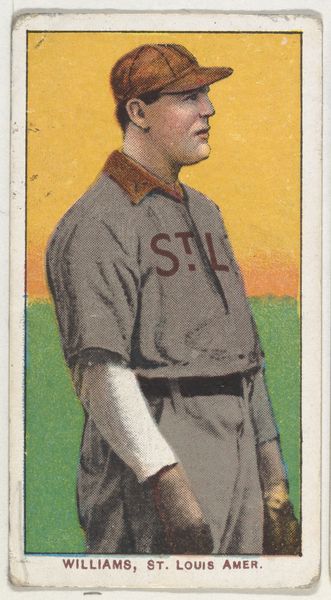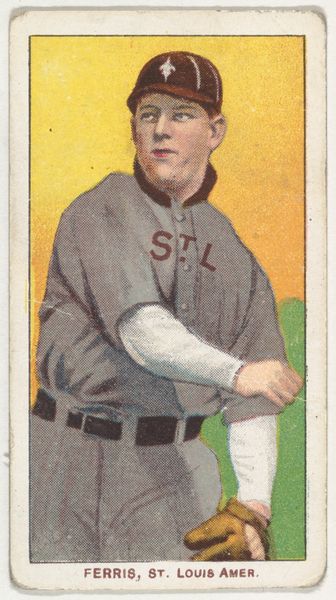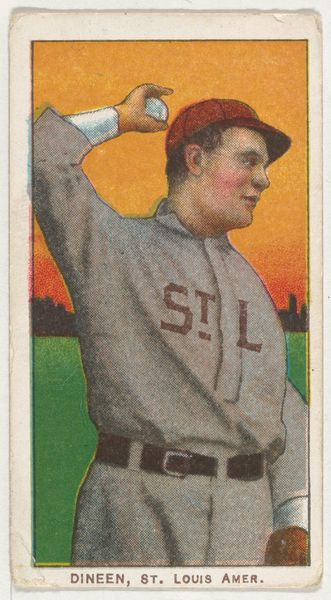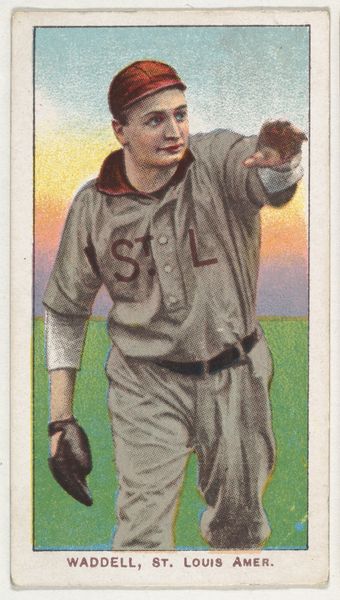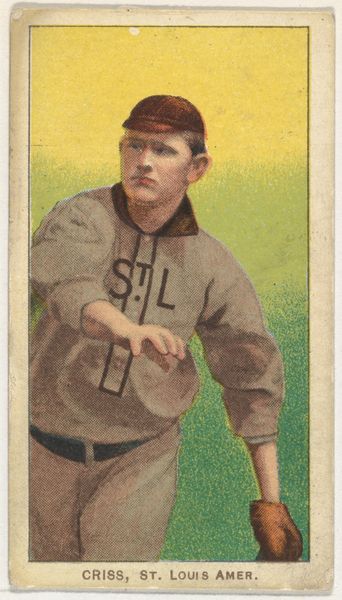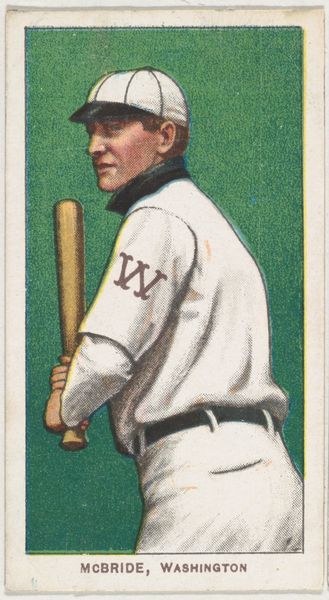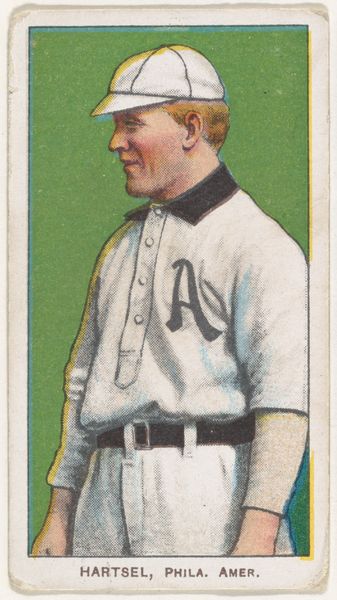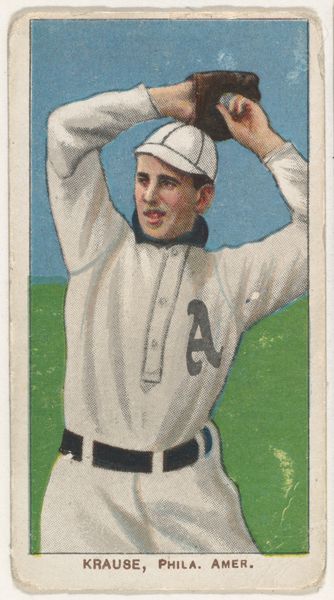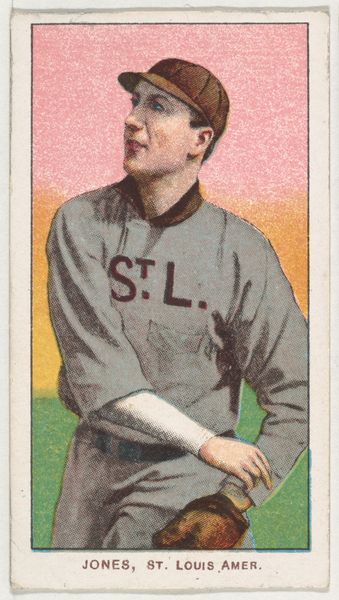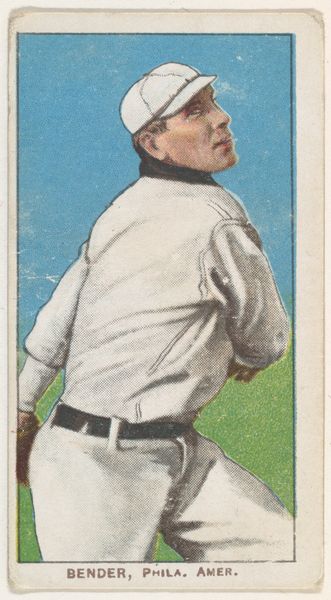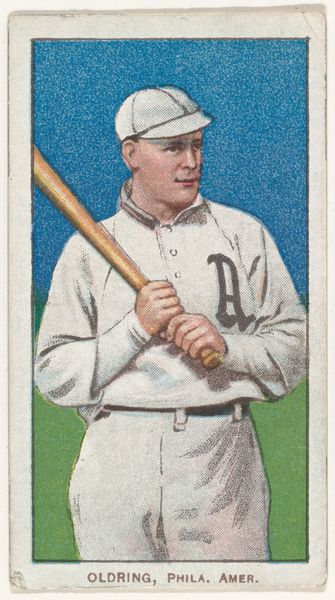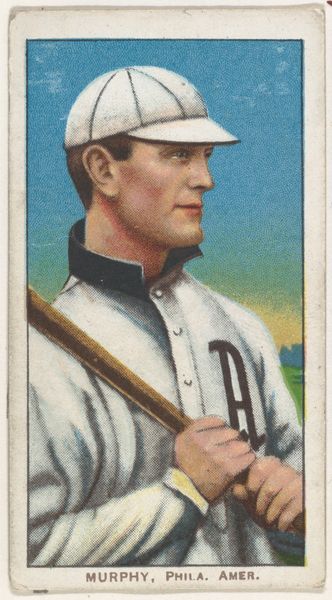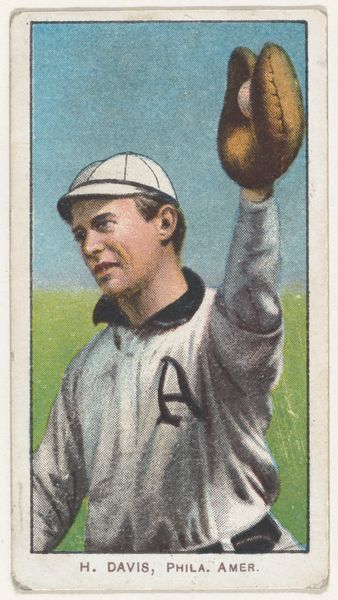
Demmitt, St. Louis, American League, from the White Border series (T206) for the American Tobacco Company 1909 - 1911
0:00
0:00
drawing, print
#
portrait
#
drawing
#
portrait image
# print
#
caricature
#
caricature
#
baseball
#
prehistoric
Dimensions: Sheet: 2 5/8 x 1 7/16 in. (6.7 x 3.7 cm)
Copyright: Public Domain
Curator: Let's turn our attention to "Demmitt, St. Louis, American League," a baseball card produced by the American Tobacco Company between 1909 and 1911, part of the White Border series. Editor: My initial impression is one of quaint simplicity. There’s something about the flat planes of color and the almost naive rendering of the player that evokes a powerful nostalgia for a seemingly more innocent era. Curator: It’s a lithograph print, part of a massive series intended as promotional inserts in cigarette packs. What interests me is the almost diagrammatic quality of the portrait, particularly the subtle shift in the green field meeting the horizon and the orange background. Note also the sharp delineation and the overall geometry of the image. Editor: And consider the very nature of its production! Tobacco companies distributing images of young, predominantly white, male athletes…It speaks volumes about the targeted demographic, the pervasive marketing strategies of the time, and, of course, the inherent dangers associated with tobacco consumption. Baseball itself became deeply intertwined with ideas of American masculinity. Curator: Certainly. The text below further frames this image for commercial intentions and widespread dissemination. Still, the card holds an inherent aesthetic appeal, divorced from that. Demmitt’s posture, for instance, is presented simply, directly—challenging to analyze based on style and the use of formal space and planes of simple color. Editor: I agree, the stylistic choices contribute to its charm, but to ignore the historical context would be a disservice. These cards fostered a culture of collecting, of trading—but also one of exclusion. Think of the lack of representation of other marginalized groups during this period, even within the world of baseball. Curator: It’s a cultural artifact that is also art. Viewing it through its form and style lets the composition come forward while maintaining an interest in commercial consumption through that historical lens. Editor: Exactly. This piece compels us to reflect on how power dynamics shape seemingly innocuous forms of entertainment and memorabilia, especially at the turn of the century. Curator: Indeed, and a beautiful intersection of cultural study and artistic rendering. Editor: A worthy meeting point, inviting us to delve into multiple perspectives.
Comments
No comments
Be the first to comment and join the conversation on the ultimate creative platform.
